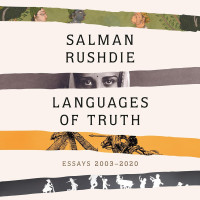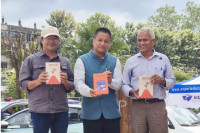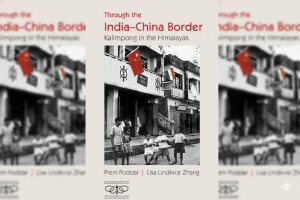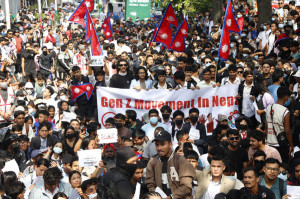Books
The more things change...
Lynn Bennett’s 1983 book explored how myths and rituals shaped gender roles in Nepali households. Forty years on, her findings remain relevant.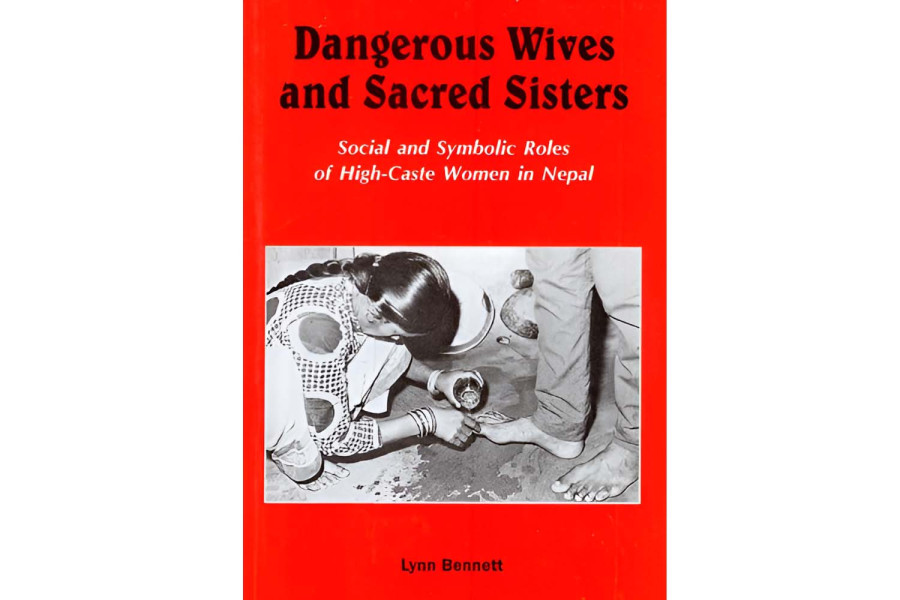
Prastuti Karki
Why do we follow the traditions without questioning them? Why are we so staunched to uphold them? What exactly are we taught, and how do we internalise it? We barely consider the deeper beliefs or reasons behind the sanctimoniously followed customs of Brahmin and Chettri families. Many, like me, must have thought they were rooted in some mythical fable. However, reading ‘Dangerous Wives and Sacred Sisters’ changed that perspective entirely.
In this work, Lynn Bennett outlines how cultural influences shape the construction of gender and the obligation to adhere to gender norms among women in the Brahmin and Chettri communities. This comprehensive study depicts how social, mythical, and ritual structures influence power dynamics between men and women.
The study offers an in-depth overview, significance, and procedural guidelines of the rituals predominantly observed in the two communities from birth until death. It illustrates women’s experiences in these communities amidst strong patrilineal ideologies favouring sons over daughters. Bennett’s main assertion is based on women’s two households, representing two opposing values and relationship patterns. In her study, the filia focal aspect is centred on ‘sacred sisters’, and the patrifocal model is gravitated towards ‘dangerous wives’.
The author begins by offering background on the study area, Narikot in Pyuthan. Geographically, Narikot is a small village where the author spent the first nine months of her research. Situated along a ridge, the town slopes down 200 feet to a large river on one side, ascending through a series of plateaux and connecting ridges to the valley rim. Politically, Narikot no longer exists as a single entity. With the establishment of panchayat democracy in the 1960s, it was divided into wards and integrated into a larger administrative unit. However, the residents, especially the women, still use the old village name to refer to where they live.
Throughout the study, the author has documented the religious and social significance of rituals practised by the Brahmin and Chhetri families. Beyond rituals, Bennett reveals a deeply entrenched patrifocal social structure, where women are described as the ‘submerged members of society’. A village member reinforced this notion by referring to women as ‘small’, a term indicative of low rank, emphasising that women must show deference to all while men command respect and obedience.
Similarly, a patrifocal ideology rooted in male superiority and age-based hierarchy, where affinal women rank below everyone else in their husband’s homes, was also studied. This system reflects a broader ambivalence toward women, reinforcing both their lower social status and restrictive behavioural expectations.
The society not only assigns lower rank but also imposes unrealistic behavioural expectations on women. Married women are expected to appear ‘shy’, a norm that both openly and subtly encourages them to be reserved, modest, and hesitant to go out on their own. On the contrary, outspoken, assertive, or independent women were described as ‘contentious, noisy, and immodest’ and were associated with negative connotations like, having sexual looseness.
Bennett also divulged the prevailing differences between sons and daughters. Some women in the village somberly remembered that milk and yogurt were given only to sons, and that boys did less work. Additionally, older women dejectedly reported that only boys were allowed to go to school when they were young. Into the bargain, authority over household and property management rests with the senior male.
Waltzing back to the topic of marriage, the looming trauma of being sent away to live in the homes of demanding strangers was a constant shadow over a woman’s childhood. During child play, girls often reenacted marriage scenarios where everyone eagerly took on the role of the husband or mother-in-law but no one wanted to be the bride. The respondents in the study recounted their experiences where they as brides faced harsh scrutiny upon entering their husband’s house. The public ideal of a bride is expected to be religious and devoted to the husband. Bennet has subtly implied that despite the fact that society paints marriage to be prerogative, it actually is quite deprecating for women.
Beyond childhood play, the transition from daughter to daughter-in-law represents a profound shift in social standing. While daughters are esteemed in their natal home under the filia focal model, this status is fundamentally altered upon marriage. Similarly, Bennet speculated that the once cherished daughter became an outsider, navigating a new household where her presence is closely monitored and often subject to scrutiny.
The most disturbing finding about the rituals and celebrations in Brahmin and Chhetri communities is the strong belief in purity and pollution. This idea shapes social hierarchy and promotes exclusion, all in the name of tradition. The study highlights how certain symbolic opposites—like pure vs polluting, sacred vs dangerous, and blood relatives vs in-laws—are strictly followed during cultural practices. These beliefs are often tied to gender, reflecting the mixed and often negative attitudes towards women in a male-centered society.
The concept of ritual purity and pollution in Hindu culture is entrenched, and one of the most absurd manifestations of this is menstruation. According to the culture, menstruation is viewed as a source of intense pollution, especially for men who are initiated into certain rites, leading to the bizarre and degrading practice of segregating women for the first four days of their cycle. Even the participants in the study shared that during menses, women are not allowed to enter the kitchen, touch food or water, or participate in any religious ceremonies. This monthly ritual enforces the idea that women are inherently impure, severely limiting their social and religious participation.
Absurdly, this entire concept of menstruation as impurity is not just something imposed on adults; rather this discriminatory concept has been ingrained in girls from a young age, teaching them that menstruation is a stain, a pollution. The menarche rite, intended to mark a girl’s transition into sexual maturity, instead traps her in an oppressive cycle, linking her biological process to impurity. She is burdened with increased responsibility for pollution and forced into purification rituals, as though menstruation is something to be ashamed of, something inherently dirty.
Bennett explains that the horrors of purity and pollution persist especially after marriage. Affinal women, due to their role in procreation, are relentlessly associated with sexuality and impurity within the patrifocal system.
A few questions emerge after reading this book. Why are we not enraged by the fact that most formal life-cycle rituals are centered around males, while women are often relegated to the sidelines or entirely excluded? Why is it that the sacred rites that mark important life transitions, like the initiation with the holy thread, are exclusively for men? Women, on the other hand, are deemed impure of entering the Dashain ghar, where Durga is worshipped during Navaratri, simply because they are menstruating.
As if the social standing and the constant societal fear were not enough, religious and mythical fears are added to deliver the final blow. As if oppression and the negative connotations surrounding women weren’t already overwhelming, myths like those of the rishis’ wives take it a step further. These myths portray women as a threat to male spiritual purity due to their sexuality. Teej and Rishi Panchami rituals, which celebrate the faithful wife Arundhati and condemn the ‘unfaithful’ rishis’ wives, only reinforce the ideal of female chastity while simultaneously branding female sexuality as dangerous. The myth tied to Rishi Panchami itself blames a woman for ‘polluting’ her husband’s food during menstruation, necessitating a strict regimen of fasting and purification rituals to atone for her so-called ‘sin’.
This book certainly ignited a sense of outrage at the centuries of oppressive practices that have been justified under the guise of culture and religion. It exposes the blind hoax perpetrated by deeply rooted societal norms that have allowed the subjugation of women to continue for generations. If you want to understand the unfiltered impact of patriarchal systems on women’s lives, ‘Dangerous Wives and Sacred Sisters’ is a must-read.
Dangerous Wives and Sacred sisters
Author: Lynn Bennett
Publication: Columbia University Press
Year: 1983




 13.12°C Kathmandu
13.12°C Kathmandu

